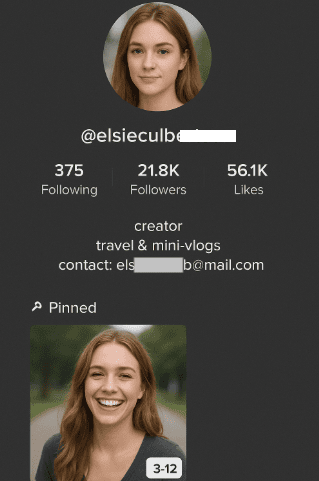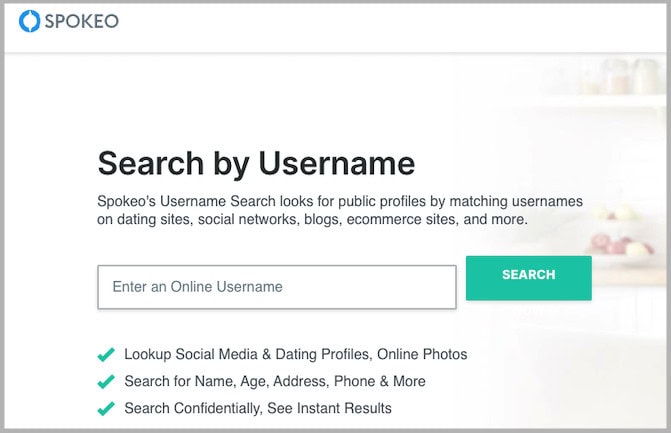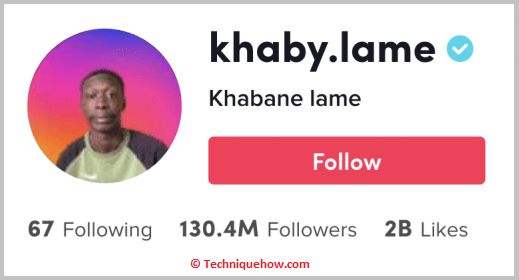One thing most people forget is that fake TikTok accounts can also quietly damage reputations, spread false information, or even be used for scams.
It becomes frustrating when someone hides behind a username and pretends to be another person or brand. This problem has grown as TikTok’s popularity exploded, creating opportunities for impersonators to copy names, photos, and videos with almost no effort.
Many users try basic methods like reporting or blocking, but that rarely solves deeper impersonation or defamation cases. This is where professional help steps in. The Legal removal services focus on tracking and eliminating harmful or fraudulent digital footprints. The process involves gathering evidence, preparing verified legal notices, and forcing compliance through TikTok’s moderation and hosting channels.
So, when simple reporting fails, this service becomes a controlled, ethical route to reclaim your online presence without escalating the issue.
Contents
How to Find Out Who Is Behind a Fake TikTok Account?
You can usually find who runs a fake TikTok account by analyzing its profile, posts, cross-platform checks, reverse lookups, and, when needed, professional legal removal can help for verified takedowns.
1. Check the TikTok profile information
First, you have to check the profile to find some clues, not proof. Look closely at the display picture (DP) for reused images, username variants (extra letters, numbers), and the display name, as these fake users often pick names that closely mimic the target but with small differences.
Check follower/following ratios and the account age (new accounts with lots of followers are suspicious). Also, scan the bio for links, email addresses, or other identifiers, and check pinned videos whether comments use the real person’s name or contain giveaways (mentions of a location, job, or contacts).
Just save screenshots and note timestamps, as this evidence helps both platform reports and law enforcement if needed.

2. Look at the posted Photos or Videos
Just look at what the account posts and how it posts. Also, notice if videos are original or clearly reposted from the real person (check audio clips, unique gestures, or visible backgrounds).
You can reverse look up on search engines to find where else the clip or photo appears. Notice language, spelling, and timestamps in captions as consistent timezone mentions or local slang can hint at origin. Does the account reply in ways the real person would? Also check metadata when available (for example, public comments referencing locations).
3. Social media mentions and cross-platform matching
Many people reuse usernames and photos across platforms. Search the username on Google, Instagram, Twitter/X, Facebook, YouTube, and LinkedIn. You can use exact-phrase searches and username-specific searches (site:instagram.com “username”).
Just look at the matching profile pictures, overlapping followers, or similar bios. If you find related accounts, compare the details (email links, website URLs, mutual contacts). Also search for the same profile picture; a reverse image search can reveal the source (stock photo, other social profiles, or stolen images). If multiple sites show the same person using that photo but with different names, map those connections. These may be the clues to the real identity or to a cluster of fake accounts.
4. Reverse lookup: Spokeo
Spokeo and similar people-search services aggregate public records and social profiles, and allow username or social-profile lookup. Enter a TikTok user’s full name or username into Spokeo’s lookup to see if it ties to a name, phone, email, or other profiles. These services often combine data from many public sources, and accuracy depends on how much the person has made public.

✔️ Social-profile lookup and email/phone cross-references.
✔️ Paid report preview, subscription options for ongoing searches.
✔️ Filters for location and age on some queries.
Offer a 7-day trial for $0.95 in many cases.
Pros:
✔️ Easier than scraping multiple sites.
✔️ Simple UI, exportable reports.
Cons:
🚫 Not 100% accurate.
🚫 Subscription cost adds up for repeated searches.
How to Know If It is A Fake TikTok Account?
If you want to further confirm if it is a fake TikTok account, you can confirm it through different signs and by checking a few points.
1. Profile and Identity Details
You can spot genuine TikTok accounts by their detailed profiles like real profile pictures, bios that make sense, and links to other social media. It helps to notice whether the information feels cohesive or contradictory.
Many fake accounts skip these details or use random images, vague bios, or inconsistent information that gives away their lack of authenticity.
2. Content and Posting Consistency
It’s worth observing the rhythm and quality of an account’s content. Real creators usually post original, creative videos that fit a theme or personal brand, maintaining steady posting patterns.
To say it, fake accounts tend to repost content, switch topics abruptly, or flood the platform with low-quality videos. These irregularities often stand out once you look closely.
3. Engagement and Audience Authenticity
You can measure credibility by checking the balance between an account’s followers, likes, comments, and shares. Actually, the real creators usually show proportionate engagement across their posts.
Some fake profiles may have thousands of followers but barely any meaningful interaction. It also helps to glance at followers’ profiles; if they seem inactive or too generic.
4. Verification Signs
It’s useful to check for verification badges, especially on accounts claiming to represent public figures or brands. While not every genuine account is verified, famous names without a blue check mark deserve suspicion.


Some fake users even edit fake badges onto their photos, so watch for signs that don’t quite align with TikTok’s official style.
TechniqueHow Legal Removal Service:
TechniqueHow Legal Removal Service operates as a solution for individuals, brands, and influencers targeted by fake TikTok or social accounts. The service begins by performing a digital scan of the impersonating profile, collecting screenshots, timestamps, linked accounts, and visible activity data.
Then, using professional takedown protocols, it drafts legally valid impersonation notices aligned with TikTok’s community policies and international privacy laws. After submission, the legal team coordinates directly with TikTok’s content moderation and trust teams to ensure removal under verified identity claims. This process not only removes the fake account but also helps prevent its reappearance by targeting duplicate handles and cached data.
Expert Takedowns
For All Major Social Networks
Our team crafts platform-specific reports, escalates appeals when necessary, and monitors for re-uploads to prevent repeat impersonation, notifying you accordingly.
START NOW
How It Works:
➡️ You must proceed with any service as you need, and we will revert to your registered email.
➡️ We will prepare and submit legal takedown requests.
➡️ We’ll confirm full removal and provide post-removal protection guidance.
Frequently Asked Questions:
If it comes again, save the new profile’s details immediately. Report it again, referencing the earlier case or takedown ID. If you have any monitoring service, it can track repeated offenders, helping reinforce future removals through platform policy or legal coordination.
Reporting through TikTok’s built-in system is safe and confidential. TikTok doesn’t notify the reported account about who filed it. However, sharing false claims, however, can backfire, so ensure your report is fact-based and supported with screenshots.
It gathers public data, so accuracy varies. It can reveal linked emails, usernames, or profiles, but should only guide investigation, not confirm identity. Always cross-check results with social-media validation and reports on the platform.

After a several reports tiktok is not taking action. Any legal advice would be helpful.
You can go with a legal process with the help of law enforcement. Then you can reach the TikTok help with the court order to speed up the process. Rest, they will guide you.
Hey, I want to know if I use an individual’s DP on my profile is it a crime? I don’t think so.
Hello, Mr. Hamilton! You cannot pretend to be someone by using his DP. People use celeb DP on their profile but does not pretend to be them. There are some action to be taken if it is detected for impersonation or performing crime.
I see someone made a clone of my TikTok. Anyone suggest me how do I report it.
Hey, Candice! You can report this account from Tiktok support and choose topic as ‘impersonation’.
I know someone created my fake profile but I could not find it. My friends told me, the profile sends messages to him.
Hi, Dan! You can directly Google search the name and find all similar accounts and check if any profile matches your query. Also, please read through our whole article, we have explained how to look at such incidents. If the person may have blocked you, you can make a second account to find that ID or ask your friend to share his profile link from where he received messages.